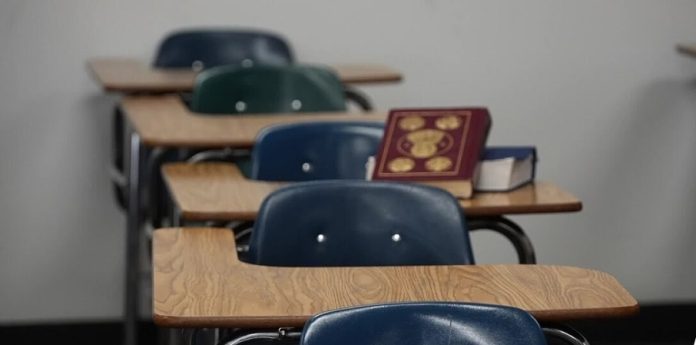COLORADO SPRINGS, CO — The recent death of Pope Francis and the ensuing papal conclave have become more than just international headlines for students at Saint Mary’s High School in Colorado Springs. The historic event has sparked deep conversations and a surge of interest in theology classes at the Catholic institution.
“All of our kids are required all four years to take theology,” explained Kate Ihlefeldt, a theology teacher at the school. “This moment is a unique opportunity to teach not only Church history, but also the importance of leadership, authority, and tradition within the Catholic faith.”
For many students, the current conclave is their first direct experience with this centuries-old tradition. Most were too young to remember the election of Pope Francis in 2013, and now find themselves captivated by the secrecy and symbolism surrounding the process.
“They go in the Sistine Chapel and it’s like, no one knows what’s going on in there. I didn’t realize it was going to be like that,” said junior Cade Barta, reflecting on the solemn and mysterious nature of the conclave.
Junior Elle Adams expressed surprise at the open eligibility for the papacy. “Only one gets chosen, but any baptized male can technically become the next pope, which is kind of crazy,” she remarked.
The significance of the moment has prompted thoughtful questions and discussions in theology classrooms. Ihlefeldt noted that students are eager to understand the role of the pope and the Church’s magisterium.
“It’s an opportunity to teach why we have a pope in the first place, why we need the magisterium, why we need the authority of the Church to kind of govern and guide us,” she said.
As black smoke rose from the Sistine Chapel on the first day of the conclave, signaling that no decision had yet been reached, students watched with anticipation.
“I kind of find the black/white smoke thing interesting too,” said Barta. “I think that’s kind of cool.”
While the world awaits the election of a new pontiff, Saint Mary’s students are getting a firsthand look at faith, tradition, and history unfolding in real time — not just as observers, but as engaged learners.
Would you like a version of this formatted for print or a school newsletter?



